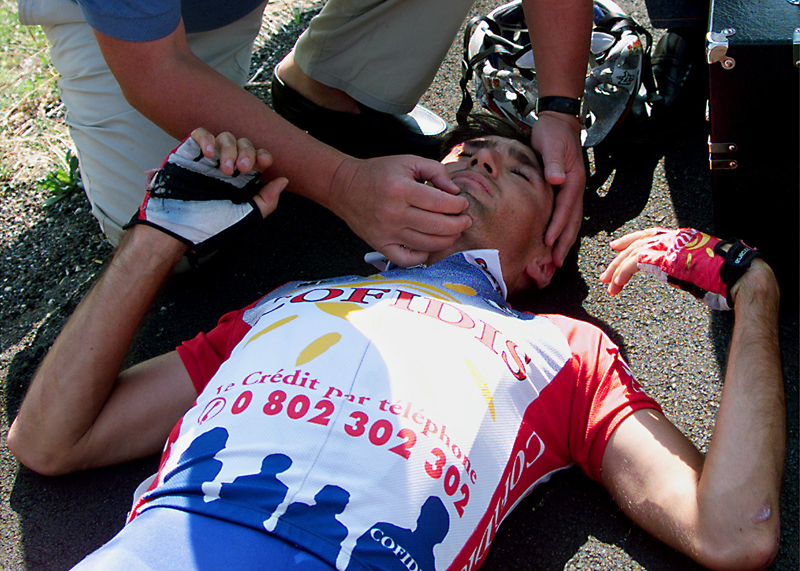You are viewing 1 of your 1 free articles. For unlimited access take a risk-free trial
Keep moving: why your training regime might NOT be enough to keep you healthy

It might surprise you to know that the biggest risk factor for early death isn’t diet, smoking or alcohol, but inactivity. Diseases of inactivity such as obesity and diabetes are THE leading cause of early death in the UKWHO Mortality Database. Available at: www3.who.int/whosis/menu.cfm?path=whosis, mort&language=english. There is no genetic explanation for the increased prevalence of these diseases, as the genetic makeup of man has changed little during the past 10,000 years. Rather, obesity, type-2 diabetes and CHD are ‘lifestyle diseases’ that can be prevented.
For endurance athletes, the good news is that the risk of early death through an inactivity-related disease is very low! Regular sessions of endurance exercise means that your total weekly activity is more likely to exceed the World Health Organisation (WHO) guidelines of accumulating 150 minutes per week of moderate-vigorous exercise, preferably in regular 10-minute bouts. But how much more likely is this to be the case, and are there some athletes who (despite training regularly) fail to meet these guidelines?
Inactive runners
To try and answer this question, researchers in a newly published study decided to investigate whether different groups of people performing habitual exercise for recreation (ie not professional athletes) met these guidelines [J Sports Sci. 2018 Aug;36(16):1793-1800]. In this study, the researchers compared the weekly accumulated physical activity of three groups of subjects:- *Twenty five distance runners (reporting their mileage as averaging a total 41 per week).
- *Twenty five joggers (reporting their mileage as averaging a total of 17 per week).
- *Twenty sedentary adults (not following an exercise routine, but just performing daily activities).
The findings
Unsurprisingly, the first key finding was that 65% of the sedentary group failed to meet the minimum WHO recommendations. However, 32% of the joggers and 4% of distance runners also failed to meet these basic guidelines! Among these runners, those who reported running less than 50kms per week were most likely to fail to meet the guidelines. However, a significant number of the subjects reportedly running more than 50kms per week still failed to meet these guidelines. The researchers concluded that participating in a regular running programme did NOT automatically mean that the minimum WHO guidelines were met.Implications for runners
These rather surprising findings lead to two possible conclusions. The first is that some of the runners may have been over-reporting their total distance/running time. Another is that some of the runners may have been very sedentary for the rest of the time – ie when not running. Although it sounds unlikely, this could be easier that you might imagine. Consider someone who exercises vigorously for 45 minutes three times per week, but then gets in a car, drives to the office, sits all day, then drives home and sits for evening. If their tri-weekly exercise bouts are the only active periods in their normal daily routine, they will not be meeting the minimum guidelines. The take-home message is that unless you are training on MOST days of the week, you should try and monitor your activity levels and incorporate other types of activity into your daily routine. Don’t assume that just because you’ve exercised at some point in the day, the rest of your day can be completely inactive.PRACTICAL SUGGESTIONS
Here are some practical suggestions for runners (and other athletes) who perform modest volumes of training but whose lifestyles are otherwise sedentary:- Invest in some kind of activity monitor (from a basic step counter to a smart watch), which will keep tabs on your actual activity levels. The insights these devices provide can be very useful when structuring and planning your training.
- Regardless of how hard or long you train, sitting for long periods is undesirable both for posture and health. Indeed, recent research suggests that sitting for long periods increases your risk of diseases such as heart disease, even among those who exercise regularly Ann Intern Med. 2017 Oct 3;167(7):465-475. You should aim therefore to take regular breaks; a 100 steps and some stretches each hour and perhaps a 20-minute walk at lunchtime.
- Consider taking up an enjoyable leisure activity – separate from your training - that involves some moderate physical activity. These could include a game of football with the kids, walking the dog or anything else that’s fun and relaxing!
Newsletter Sign Up
Testimonials
Dr. Alexandra Fandetti-Robin, Back & Body Chiropractic
Elspeth Cowell MSCh DpodM SRCh HCPC reg
William Hunter, Nuffield Health
Newsletter Sign Up
Coaches Testimonials
Dr. Alexandra Fandetti-Robin, Back & Body Chiropractic
Elspeth Cowell MSCh DpodM SRCh HCPC reg
William Hunter, Nuffield Health
Keep up with latest sports science research and apply it to maximize performance
Today you have the chance to join a group of athletes, and sports coaches/trainers who all have something special in common...
They use the latest research to improve performance for themselves and their clients - both athletes and sports teams - with help from global specialists in the fields of sports science, sports medicine and sports psychology.
They do this by reading Sports Performance Bulletin, an easy-to-digest but serious-minded journal dedicated to high performance sports. SPB offers a wealth of information and insight into the latest research, in an easily-accessible and understood format, along with a wealth of practical recommendations.
*includes 3 coaching manuals
Get Inspired
All the latest techniques and approaches
Sports Performance Bulletin helps dedicated endurance athletes improve their performance. Sense-checking the latest sports science research, and sourcing evidence and case studies to support findings, Sports Performance Bulletin turns proven insights into easily digestible practical advice. Supporting athletes, coaches and professionals who wish to ensure their guidance and programmes are kept right up to date and based on credible science.











